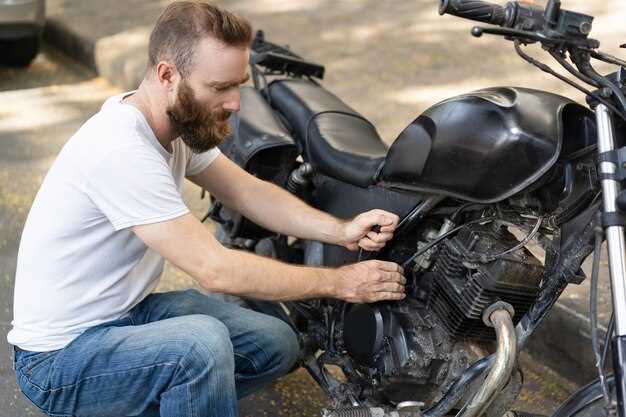
When it comes to enhancing your motorcycle’s performance, one of the most significant modifications you can undertake is an engine swap. This decision, while exciting, requires careful consideration of various factors that can affect both the functionality and enjoyment of your ride. Understanding the implications of swapping your motorcycle engine can help you make an informed choice that aligns with your performance goals and riding style.
Performance Enhancement is often the primary motivation for enthusiasts contemplating an engine swap. A more powerful engine can provide increased acceleration, improved handling, and a more exhilarating riding experience. However, the benefits of a swap should be weighed against the costs and potential challenges involved in such a transformation.
In addition to performance gains, there are practical aspects to consider. These include compatibility with your bike’s existing framework, electrical system, and transmission. A successful engine swap may require modifications to several bike components, which can increase the project’s complexity and cost. Moreover, one must also think about the long-term reliability and maintenance of the new engine.
In this article, we will delve into the advantages and disadvantages of swapping motorcycle engines, providing you with the insights needed to determine if this performance upgrade is the right move for you. Understanding the technicalities and potential outcomes will empower you to embark on this journey with confidence.
Assessing Your Current Engine’s Performance: Key Indicators

When considering an engine swap for performance improvements, it’s essential to evaluate the current engine’s performance accurately. Understanding key indicators can help you make informed decisions regarding upgrades or replacements.
1. Power Output
Measure the horsepower and torque of your motorcycle engine. This can typically be assessed using a dynamometer. If your engine is underwhelming in these areas compared to similar models or your performance goals, it may indicate the need for a change.
2. Acceleration Speed
Monitor how quickly your motorcycle accelerates from a standstill to a specific speed, such as 0-60 mph. If the time taken is longer than expected, particularly for your motorcycle category, this could suggest inefficiencies in the engine’s performance.
3. Fuel Efficiency
Examine your motorcycle’s miles per gallon (MPG) rating. A decline in fuel efficiency over time might indicate engine wear or problems that can affect overall performance. If the efficiency is lower than what’s typical for your bike model, it may warrant an overhaul or replacement for better performance.
4. Engine Noise and Vibration
Unusual noises or excessive vibrations can signal potential issues affecting your engine’s performance. If the engine sounds rough or vibrates excessively during normal operation, further investigation is needed to determine if an engine swap is necessary.
5. Operating Temperature
Keep track of your engine’s operating temperature. If your motorcycle consistently runs hotter than normal, it may suggest inefficiencies or wear that can hinder performance. Such symptoms might indicate the need for an engine upgrade to ensure optimal operations.
6. Maintenance History
Review your maintenance records to determine the frequency and types of repairs performed. A history of recurring issues could suggest that your engine is nearing the end of its lifespan and might benefit from a replacement for performance enhancements.
Carefully assessing these indicators can provide a clearer picture of your engine’s current performance and whether an engine swap is the right choice for your motorcycle. Making a well-informed decision can lead to a significant upgrade in overall riding experience and satisfaction.
Understanding the Costs and Benefits of an Engine Swap
When considering an engine swap for performance enhancement, it is crucial to analyze both the costs and benefits associated with the process. Understanding these factors will help you make an informed decision that aligns with your performance goals and budget.
One primary benefit of an engine swap is the increase in power and torque. Upgrading to a higher-performing engine can significantly enhance your motorcycle’s acceleration, top speed, and overall responsiveness. This can result in a more exhilarating riding experience and better handling capabilities, especially for racing or off-road applications.
Another advantage is the potential for improved efficiency. Some newer performance engines offer advanced technology that can lead to better fuel economy while maintaining high power outputs. This can be particularly appealing for riders seeking both performance and practicality.
However, costs associated with an engine swap can be substantial. Firstly, the price of the new engine itself can vary widely, depending on its make, model, and condition. Additionally, consider the costs for necessary modifications to the motorcycle frame, wiring harness, and exhaust system to accommodate the new engine.
Labor costs should also not be overlooked. If you lack mechanical expertise, hiring a professional for the swap can add to the overall expense. Even if you perform the work yourself, you will still need to account for tools, parts, and potential troubleshooting that may arise during the process.
Moreover, an engine swap can also affect the motorcycle’s insurance and resale value. Upgrading can potentially increase the motorcycle’s market value but may also complicate insurance coverage if the new engine significantly alters performance specifications.
Furthermore, consider potential reliability issues. A new engine may not have the same compatibility or track record as the original, leading to unforeseen maintenance needs or failures. It’s essential to research the new engine’s reputation and ensure reliable sourcing.
In summary, while an engine swap can offer substantial performance enhancements and ride enjoyment, it also comes with considerable costs and potential complications. A thorough evaluation of your financial situation, technical capabilities, and long-term goals will be essential in making the right decision for your motorcycle build.
Choosing the Right Engine Upgrade for Your Riding Style

Selecting an engine upgrade involves understanding your personal riding style and the type of performance you desire from your motorcycle. Different riders have distinct preferences, and knowing how you ride will help you make an informed decision.
If you enjoy long-distance touring, consider an upgrade that enhances torque and fuel efficiency. A bigger displacement engine can provide the necessary power for highway speeds, allowing you to cruise comfortably while maintaining excellent fuel consumption. Look for engines known for reliability and smooth power delivery, ensuring a pleasant riding experience over long journeys.
For those who prioritize speed and agility, a high-revving engine with a lightweight design may be ideal. Upgrading to a performance engine that produces higher horsepower at elevated RPMs can significantly improve acceleration and handling. Research models that are renowned for their track capabilities, as they often feature advanced technologies like variable valve timing or turbocharging.
If your passion lies in off-road adventures, select an engine that offers durability and low-end torque. These characteristics are essential for navigating rough terrains and steep inclines. Look for engines with robust construction and the ability to handle harsh conditions, as they will provide the power needed for challenging trails.
Lastly, consider how your engine choice aligns with your budget and maintenance capabilities. Performance engines may require more frequent servicing and higher-quality fuel, impacting your overall expenses. Ensure you can support the necessary upkeep and that the upgrade provides value for your riding goals.
In summary, aligning your engine upgrade with your riding style will enhance your motorcycle experience. Take the time to assess your preferences for distance, speed, terrain, and budget before deciding on the right engine to boost your performance.













